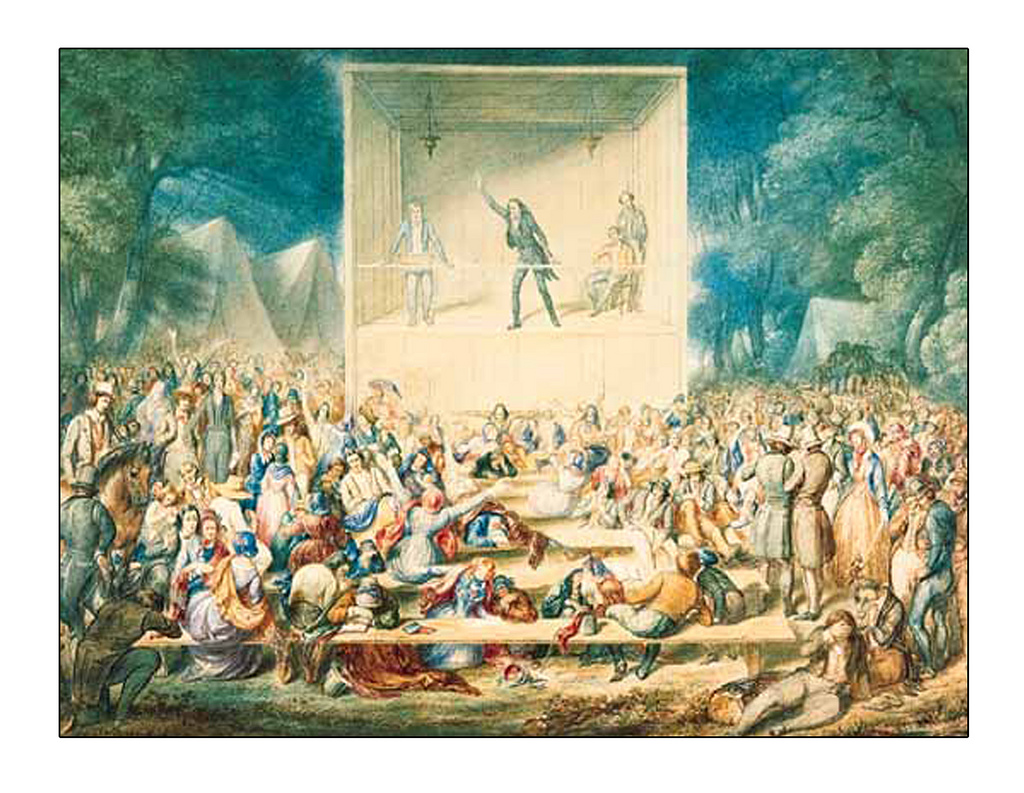This portrait was done by an anonymous English artist in 1839 in water color. If examined carefully, this image portrayed many unique things such as a relaxed atmosphere, outdoor location, and mixed gender congregation. Through the artist's use of color and historical accuracy, the artist is able to capture the essence of a camp meeting during the time period of great religious revival in America: the Second Great Awakening.
The time period is just around the time of the Industrial Revolution, hinting the influence of economic revolution with that of social revolution. In past years, religion had harsh rigid rules that the young people did not like. Due to the climatic changes in economics, many people abandoned this strict interpretation, or religion as a whole. Firm believers became frightened by this and ultimately began the movement for a religious revival. The most notable change in the religion was the image of god as a kind loving father, rather than a strict teacher.
This picture is of a North Carolina camp meeting wear traveling priests gave sermons. Many people are gathered, and what is unique to to this mass meeting is that it is outdoors. Using a variety of colors allows for this atmosphere, and further strengthens the significance and beauty of being connected with nature. The relaxed atmosphere went along with the new preaching that human suffering is not required to be let into Heaven. By portraying many females within the crowd, the significance of women in religious sermons can be understood. In actuality, during this time period a vast majority of believers were females.
Within feet of the crowd are planks, which were referred to as "anxious benches." It is on these crude seats that people confessed their sins in front of a crowd. Men and women would mourn for the poor individual, but also cheer, for their are cleansing themselves of their sins. The historical accuracy of this painting is what has allowed it to be a popular piece of art, even in the 21st century.











